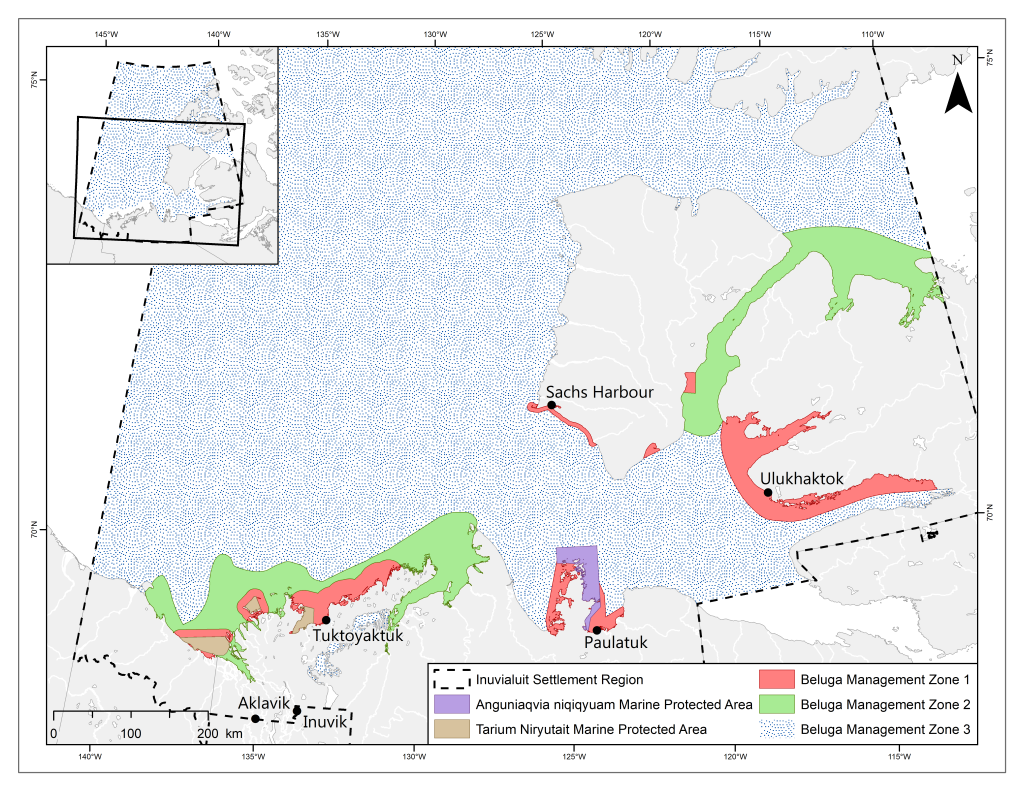Beluga
Generations of Inuvialuit and their ancestors have traditionally managed and sustainably utilized beluga whales that summer in the Canadian Beaufort Sea. Beluga whale have been, and remain, the most revered socio-cultural species to the Inuvialuit and constitute a cornerstone of the Inuvialuit subsistence diet. Consequently, beluga monitoring and research remains a priority for the Inuvialuit and the FJMC. More information on beluga research and monitoring in the ISR can be found here.
Beluga harvest monitoring in the ISR
Inuvialuit harvest of beluga is monitored in the ISR as part of the FJMC Fish and Marine Mammal Community Monitoring Program (FMMCMP) and is a co-operative effort led by the Inuvialuit Hunters and Trappers Committees (HTCs), DFO and the FJMC. The measurements and samples collected from harvested beluga provide us with valuable information on the health of this stock, and may allow trends or changes to be observed as a long-term dataset is available.
Information that is collected through the beluga harvest monitoring program:
- Hunt location
- Whether or not any whales were lost on hunt
- Whether or not calf was with, or fetus was in womb of female whales
- Whale information and measurements
- Colour (brown, dark grey, grey, white, yellow)
- Sex
- Total length (snout to tail)
- Girth at widest part
- Girth at anus
- Fluke (tail) width
- Blubber thickness at breast bone
- Blubber thickness above anus
- Samples collected
- Eyeballs
- Blood
- Milk
- Skin
- Blubber with skin (full depth)
- Lower jaw
- Muscle meat
- Liver
- Kidney
- Stomach contents
Beluga resources for the ISR
- Beaufort Sea Beluga Management Plan: 2024, 2013, 2005, 2001, 1998, 1991
- Beluga Bulletin: Fall 2014, Winter 2015, Fall 2015, Spring 2016
- Beluga Summit Program – Inuvik, February 2016
- Inuvialuit Hunters and Trappers Committees (HTCs) Beluga Hunting Bylaws and Guidelines – FJMC Brochure
- www.beaufortbeluga.com
 Fisheries Joint Management Committee
Fisheries Joint Management Committee
